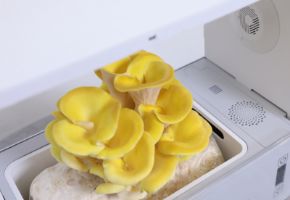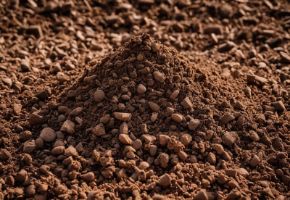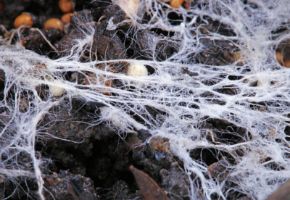Today, we will explore an often overlooked but fascinating aspect of the fungal world: animals that feed on fungi. This phenomenon, called mycophagy, involves a surprising variety of creatures, from insects to mammals, each with unique strategies to exploit this food resource.
Animals and mycophagy: a widespread but little-known phenomenon
Before diving into specific species, it's important to understand what mycophagy is and why it represents such an interesting ecological adaptation.
Definition and types of mycophagy
Mycophagy can be classified into several categories:
- Obligate mycophagy: Animals that depend exclusively on fungi for survival
- Facultative mycophagy: Species that include fungi in their diet but do not rely entirely on them
- Seasonal mycophagy: Animals that consume fungi only during certain times of the year
According to research published in ScienceDirect, approximately 30,000 animal species include fungi in their diet to a significant extent.
Ecological importance of mycophagy
Mycophagous animals play crucial roles in ecosystems:
- They contribute to the dispersal of fungal spores
- They help maintain balanced fungal populations
- They often serve as indicators of ecosystem health
A study in the Nature Research Journal demonstrated that forests with greater diversity of mycophagous animals exhibit richer fungal biodiversity.
Mycophagous invertebrates: the small but mighty consumers
The world of invertebrates hosts some of the most voracious fungal consumers, often specialized in particular fungal species.
Insects and fungi: a millennia-old relationship
Many insects have evolved complex relationships with fungi, ranging from simple predation to mutualistic symbiosis.
Fungivorous Beetles
The Scolytinae family (bark beetles) includes species that:
- Excavate tunnels in wood while inoculating fungal spores
- Feed on the fungi growing in these galleries
- Create true fungal "cultivations"
According to the Entomological Society of America, some beetle species can carry up to 100,000 spores each in specialized body structures called mycangia.
Leafcutter ants
The famous ants of the genus Atta and Acromyrmex:
- Collect leaves not to eat them directly
- Use them as substrate to cultivate fungi
- Feed exclusively on these cultivated fungi
This symbiotic relationship is so specialized that, as reported by Science Magazine, each ant species cultivates a specific fungal strain, passed down through generations.
Snails and slugs: the fungal gourmets
Gastropods are among the primary consumers of fungi, often with highly selective dietary preferences.
Research published in the Journal of Molluscan Studies showed that:
- Snails can distinguish between edible and toxic fungal species
- Some species prefer particularly mature fungi
- Their mouthparts are specialized for scraping the surface of fungi
Mycophagous vertebrates: from rodents to primates
Among vertebrates, we find some of the most interesting mycophagous species, with surprising adaptations to a fungal diet.
Small mammals: the primary spore dispersers
Rodents like mice and squirrels play a fundamental role in the dispersal of fungal spores.
Squirrels and hypogeous fungi
Squirrels:
- Dig to find truffles and other hypogeous fungi
- Consume only part of the fruiting body
- Disperse spores through their feces
A study by the Ecological Society of America revealed that a single squirrel can disperse up to 30,000 spores per day.
The Enigmatic Fungus Mouse
The Peromyscus maniculatus, or fungus mouse:
- Depends on fungi for 60% of its diet
- Has developed a specialized digestive system
- Is immune to many fungal toxins
Ungulates and other large mammals
Even large animals include fungi in their diet, often with surprising effects.
Deer and Hallucinogenic Fungi
In various regions of the world, it has been observed that:
- Deer actively seek fungi of the genus Psilocybe
- Exhibit altered behaviors after consumption
- May use them for medicinal purposes
As reported by National Geographic, this is one of the few documented cases of animal self-medication with psychoactive substances.
Curiosities and special cases of mycophagy
The world of mycophagy holds continuous surprises and truly unique cases in the animal kingdom.
The fly that turns into a fungus
Some fly species of the genus Entomophthora:
- Are parasitized by fungi
- Have their behavior controlled by the fungus before death
- Are driven to land in ideal spots for spore dispersal
A chilling example of "fungal zombification", well-documented in Science News.
Birds that eat fungi
Although rare, some birds include fungi in their diet:
- The capercaillie feeds on hypogeous fungi in winter
- Some parrot species consume wood-decaying fungi
- Thrushes can disperse spores through their feces
According to Cornell Lab of Ornithology, this habit may be more widespread than previously thought.
Animals: a crucial role in fungal species conservation
As we've seen, animals that feed on fungi play irreplaceable ecological roles:
- They maintain fungal biodiversity
- Promote forest regeneration
- Serve as indicators of healthy ecosystems
Unfortunately, many of these animals are threatened by:
- Habitat loss
- Climate change
- Pollution
Protecting these species means protecting entire ecosystems and the extraordinary web of relationships that sustain them.
Have you observed animals feeding on fungi during your mycological excursions? Share your experiences in the comments!
The fungal kingdom is a universe in continuous evolution, with new scientific discoveries emerging every year about their extraordinary benefits for gut health and overall well-being. From now on, when you see a mushroom, you will no longer think only of its taste or appearance, but of all the therapeutic potential it holds in its fibers and bioactive compounds. ✉️ Stay connected - Subscribe to our newsletter to receive the latest studies on: Nature offers us extraordinary tools to take care of our health. Fungi, with their unique balance between nutrition and medicine, represent a fascinating frontier we are only beginning to explore. Continue to follow us to discover how these extraordinary organisms can transform your approach to well-being.Continue your journey into the world of fungi









